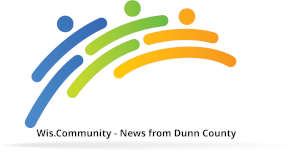“Rain, rain, go away. Come again another day,” the little Eau Claire girl sang to her mom. The rain came down in sheets.
When the rain and storms did go away, left in the wake was a trail of destruction. From Martel Township in the north to Little Fall Township in the south, our Senate District saw substantial damage. Downed power lines, trees toppled, tin from barn roofs blown off, semi trailers and campers blown over.
Roads and bridges were washed out or damaged. Many saw blocked culverts turn into substantial road damage for town roads and private drives.
In Buffalo County homes were flooded, some perhaps damaged beyond repair. Cows were stranded. Pierce County deputies assisted a farmer who had about 80 heifers “floating down” the Rush River. Thankfully, most of the animals were recovered alive.
It’s been a tough summer.
From high winds, tornados and now, lots of rain, Western Wisconsin has seen more than its share of extreme weather events.
To solve the problems spawned by the storms, people turn to local government.
“People expect us to figure out a way for them to get to and from their homes- even though their road is washed out,” one local county highway worker told me. “They have patience, but not for very long.”
The damage comes at a time when local government is already strapped for cash. The severe budget cuts made by the state directly impacted the resources available to local government. Although I and my Rural Caucus colleagues fought hard to increase Road Aid to local government, many town officials told me the increase in road money barely (or did not) off set the state cuts in shared revenue.
To stretch their limited budgets, town officials delayed maintenance – often turning the two-year maintenance plan into a five-year plan, or longer. When crisis comes, there is simply no money left over to pay for repairs.
Local residents cannot wait until town officials figure out how to pay the bill. They demand – and rightly so – the roads be fixed as soon as possible. But the town – and the county – has to balance its budget just like the state.
I talked with town supervisors and county officials wondering what options are available for funding road repairs. The good news is that emergency funds are available from the state for flood damage to public property and emergency road repair. Unfortunately, the emergency aid must come through the Department of Transportation bureaucracy where assistance depends on where the road is and which unit of government has jurisdiction over the road.
Officials, including myself, will be advocating for federal disaster assistance through FEMA. Individuals can help with this process by making sure the damage in your area or on your property is reported to local authorities. Local government officials are gathering information about the extent of the damage. If damage is substantial, officials - and your state senator – will seek a federal disaster declaration from the Governor. That federal declaration is necessary for federal assistance to be available to private citizens and businesses. But all of this can only happen when the list of problems to be fixed is compiled and shows significant need.
The damaged roads and bridges, damaged homes and farms, toppled trees – reminds us of what we too often take for granted. It also reminds us of the important role all units of government play in times of need. Even in these tough budget times, when we the people need help, our government of the people stands ready to work together to make things right again.
